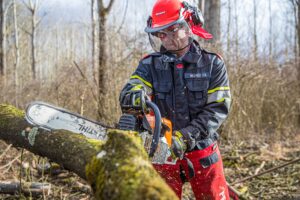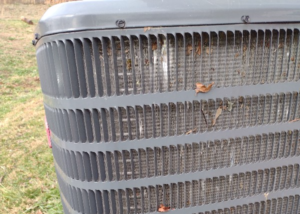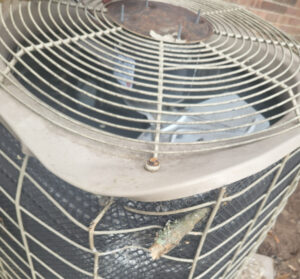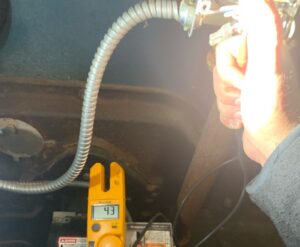3 Expert Tips For Settling HVAC Claims With Wind Damage

Wind is a common peril associated with storms, but the number of HVAC system claims that need a full replacement shouldn’t be blown out of proportion.
Between 2015-19, the combined perils of wind and hail accounted for the largest percentage of homeowner claims – 34%, according to the most recent data from the Insurance Information Institute. In contrast, these losses had lower claims severity than fire and lightning, bodily injury and property damage, or water damage and freezing during that same time.
Expert Tip No. 1: Adjusters should understand how HVAC systems could be impacted before settling property claims with reported wind damage.
Wind Claims Trends
Adjusters assigned HVACi tens of thousands of claims in 2021, and policyholders reported wind as the cause of loss for nearly 10% of them. Of those with claimed wind damage, 17% of equipment was non-damaged at the time of assessment and 11% was damaged by wear and tear, which is not typically a covered peril – more than a quarter of the equipment did not require a settlement.
When wind was a verified cause of loss, HVACi’s expert analyses concluded that 58% of equipment could be repaired to return to pre-loss condition.
Expert Tip No. 2: Adjusters should always verify cause of loss to ensure the most accurate settlements and reduce the risk of claims leakage.
Wind-Related Impacts to HVAC Systems
Wind, from storms, tornadoes, or hurricanes, can affect HVAC systems in multiple ways resulting in varying degrees of damage.
Dust And Debris Impacting Coils
Split systems are the most common residential HVAC system, and their condensing unit, which releases and collects heat through refrigerant, is outside.
Condenser coils inside the condensing unit include the copper tubing holding refrigerant and the aluminum fins that protect it. Fins are susceptible to collecting dust and debris that the wind blows in. Coils may become clogged or flattened from debris, hail, or other foreign objects, which could impact system efficiency if airflow is blocked. However, efficiency won’t be largely affected until nearly 100% of coils are flattened.

HVAC system replacements are unlikely for this type of wind impact. Policyholders could clean or comb the condenser coils using appropriate materials to return them to pre-loss condition.
Sometimes the fins in the condenser coils tear or are unable to be combed. If this happens, the most appropriate action may be to replace the condenser coils, but this again is considered a minor repair to return equipment to pre-loss condition.
Condensing Unit Damages Requiring More Major Repairs
Wind is a force of nature, and it could cause impacts to HVAC systems that require more major repairs – but replacements are still the most unlikely claim solution.
Large tree branches, lawn equipment, or other heavy objects may blow into the condensing unit causing dents, damaging the refrigerant tubes, or crushing parts of the system. An HVAC expert should evaluate the scope of damage to see if individual panels can be replaced or if a new condensing unit is necessary to return equipment to pre-loss condition.

A condensing unit may also be blown over or shifted off its pad, depending on the wind speed or force. The condenser coil and/or the fan assembly may be affected and require replacement. Additional components at risk of damage if the condensing unit moves are the lineset and the electrical whip, which transport refrigerant to the indoor equipment. Contaminants could enter the refrigerant tubes and cause significant damage.
Even if a new condensing unit and lineset are needed, it is unlikely that the indoor HVAC equipment, such as the furnace, will also have to be replaced. The type of refrigerant and the configuration of the equipment are the variables that would impact that. But if there is a refrigerant mismatch, such as a new condensing unit that uses R-410A and a furnace that uses R-22, additional components and actions can be taken to make the equipment compatible without a full system replacement.
Expert Tip No. 3: Get an objective HVAC system expert to determine how much of the equipment was impacted and recommend the best solution.
Expertise and Objectivity Are Keys to Accurate Settlements
The scope of wind damage to an HVAC system varies. Only someone with HVAC experience should determine the most appropriate course of action to return equipment to pre-loss condition. However, adjusters shouldn’t simply accept estimates provided by policyholders’ contractors.
Often, contractors are more likely to suggest replacing equipment that is unnecessary, compared to a more minor repair such as cleaning or replacing condenser coils. It’s critical that adjusters obtain an objective assessment for more accurate claim settlements.

The experts at HVACi have decades of experience and first-hand knowledge about HVAC systems and the insurance industry. Our thousands of vetted technicians located nationwide aren’t allowed to discuss findings with policyholders or solicit work to guarantee their objectivity. The HVACi team then analyzes diagnostic data to deliver reports that include cause of loss verification, repair and replacement recommendations, and market value pricing for all available equipment.
Don’t throw caution to the wind when making settlement decisions for claims with HVAC systems. Submit a claim to HVACi to receive data-driven results quickly.


